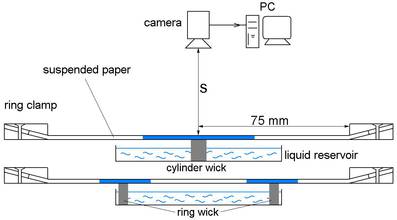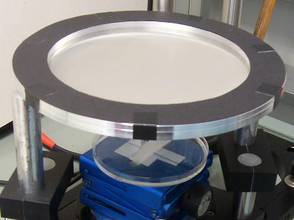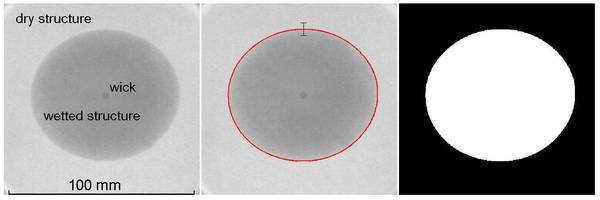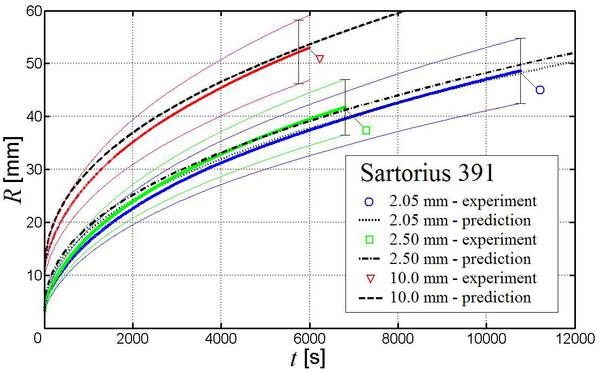isotropic radial wicking
Capillary transport is a basic mechanism that works under variable gravity conditions including weightlessness. Therefore, it is also of interest for space applications like propellant management devices that ensure an undisturbed fuel supply. Within these devices, the capillary force is bound to porous, mostly woven structures like stainless steel weaves. If the liquid fuel comes in point contact with the porous structure for the first time, it imbibes it radially outward. If due to evaporation a part of the porous structure has fallen dry, it will be re-wetted by radially inward imbibition.


We have performed a theoretical and experimental study on the more basic situation when liquid spreads within a porous screen radially from an infinite reservoir. Figure 1 shows the arrangement. Our experiments are conducted with screen-like specimen of filter paper to ensure good observability and to avoid the displacement problem that would arise in a voluminous body. The paper screens are suspended on a ring clamp and from below a feeding wick touches the screen. The feeding wick rests in a reservoir containing the test liquid. As soon as contact between paper screen and feeding wick is established, the radial wicking process begins.

Figure 2 illustrates how a wetted spot grows in time for outward wicking. Inward wicking is achieved, by using a ring wick, for further information on that please look in the quoted literature. In regular intervals, a snapshot of the wetted spot is recorded. Subsequently, the wetted spot images are evaluated using Matlab routines to detect the perimeter of the spots, see Figure 3.
Our theoretical model predicts both outward and inward radial transport and is based on Darcy's law. While the model predicts the qualitative course of evolution for the spots, reference experiments are necessary for quantitative predictions. As example, Figure 4 shows the experimental results along with the prediction for one filter paper in which the test liquid spread from three different feeding wicks. As can be seen in the Figure, the results follow well the prediction within the expected error margins.


The results of this study contribute to the understanding and reliability of fluid handling in space where porous screen applications are widespread.
The funding of the research project by the German Federal Ministry of Economics and Technology (BMWi) through the German Aerospace Center (DLR) under grant number 50 RL 0741 is gratefully acknowledged.
literature:
M. Conrath, N. Fries, M. Zhang and M. Dreyer. Radial capillary transport from an infinite reservoir. Transport in Porous Media, 84, pp. 109-132 (2010).


 "
"